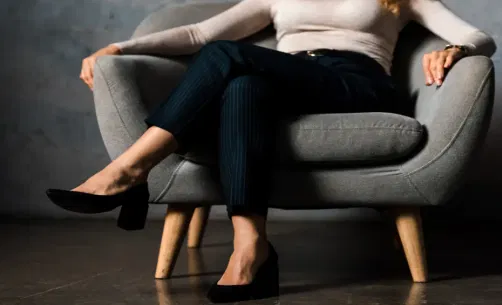The act of crossing one’s legs while sitting is more than just a physical posture—it’s a behavior steeped in cultural, social, and psychological significance. For centuries, women’s sitting positions have been shaped by societal expectations and norms, with crossing the legs often symbolizing modesty and elegance. In many cultures, this gesture has long been linked with femininity, projecting an image of delicacy and grace that aligns with traditional ideals of womanhood.
Historically, the way women were expected to present themselves was closely scrutinized. In 18th-century Europe, for example, art and literature celebrated postures that conveyed elegance and decorum, with crossed legs often being seen as the epitome of refined femininity. Yet, this gesture is not universally interpreted in the same way. In some Eastern cultures, crossing the legs might be perceived as a sign of disrespect or disdain, highlighting the crucial role cultural context plays in understanding such behaviors.
Despite changing perceptions of femininity, the act of crossing one’s legs remains a widespread and enduring gesture among women. This could be the result of early socialization, where young girls are taught to sit in a manner that reflects grace and composure. In modern times, influences from fashion, media, and art continue to shape these behaviors, making them not only personal choices but also responses to the social pressures women face in public settings.
While it may seem like a simple habit, the act of crossing one’s legs is a nuanced behavior that speaks to broader social dynamics. It reflects not just personal comfort or style, but also the lasting impact of cultural expectations on women’s freedom of movement and their presentation in the world.
The Psychology Behind Women Crossing Their Legs While Sitting

The simple act of crossing one’s legs while sitting carries profound psychological significance, revealing much about a woman’s personality, emotional state, and even her underlying attitudes. This behavior can indicate a sense of confidence and self-assuredness, or, conversely, signal shyness, discomfort, or vulnerability. In many cases, crossing the legs is a way of establishing personal boundaries—a subtle yet powerful gesture that creates a protective barrier, shielding the individual from direct interaction or unwanted social pressure. In this way, the posture can serve as a form of self-care, providing a sense of security and comfort in potentially awkward or intimidating situations.
